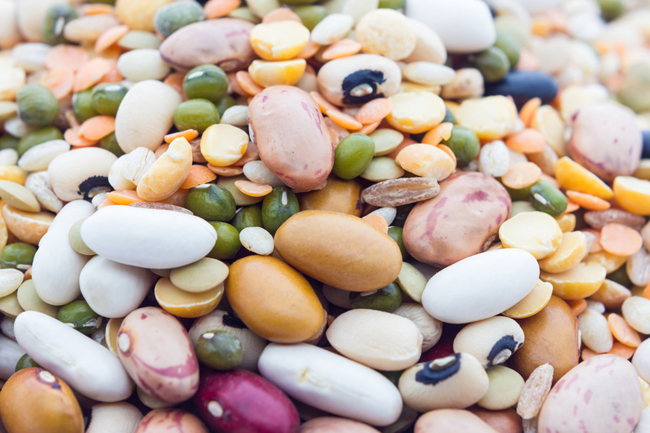Share This
Research shows over and over that traditional patterns of eating, whether Mediterranean, Asian, Latin American, or African heritage, are much healthier than the typical Western diet of highly-processed foods. These traditional food cultures are primarily plant-based, featuring lots of vegetables, fruits, whole grains, healthy oils, nuts, seeds and legumes* with smaller portions of lean meats and fish included.
One dish that is shared by these cultures is the simple combination of rice and beans. Herbs, spices, and the type of bean used are what make it unique to each cuisine, as well as how they’re eaten together. In dishes throughout the Caribbean and South America, beans and rice are often served separately on the plate. In Africa, the beans and rice are usually cooked together in the same pot. Either way, we say, “Yum!”
Here at Oldways, we’re big fans of legumes, and when you think about them, who wouldn’t be? They’ve been part of food history since the beginning of agriculture and are economical, very nutritious, and quite versatile. An added bonus is that they’re a highly sustainable crop. Lentils, for example, are easy on the land. They need little water and draw nitrogen from the air to fertilize themselves. And, when they’re harvested, there’s still enough nitrogen left in the ground to sustain the next plant!
There are thousands of varieties of legumes and we’re finding more and more of them available in grocery stores and farmers markets. Next time you’re shopping, take a tour of the beans in your market; check the bulk bins where you’ll find dried beans, look in the canned foods aisle as well as the frozen foods section. If you’re looking for inspiration on how to pair them with herbs and spices this resource can help. (It also includes ways to prepare and cook dried beans.)
To learn more about the migration of people and how it influenced the foods of Latin America and Africa, check out our July toolkit, “Latin American and African Heritage Diets.” We explore the history and cuisines of these two traditional food cultures, and include four easy and flavorful recipes that anyone can make and enjoy.
*Legumes include beans, peas and lentils.
-Deborah


Add a Comment